
UXPin is fast becoming a big deal. Having seen its revenue spike 950 per cent in 2012-2013, in February it became one of only four Polish companies to ever raise venture capital funding in the United States. In July it announced a $5 million Series A round led by True Ventures, thanks in part to Typekit founder Jeff Veen, who has taken a seat on UXPin's board.
So what is it? In short, it's a simple yet powerful & fast design platform that enables you to design prototypes, discuss design concepts easier, collaborate, create and upload UX documents, all using one app. And it's becoming very popular and increasingly influential within the community, not least because of the free books and articles it's been sharing on various design websites, including this one.
UXPin is clearly a company that's going places. So we caught up with its founder Marcin Treder to find out more...
What first got you interested in UX design?
While studying Philosophy at university I started to gain interest in the way the human mind operates. I was fascinated by artificial intelligence, cognitive psychology, and linguistics.
I picked it up from my university professor Marek Kasperski, who was one of the first UX designers in Poland. This led me to my first steps in user experience design.
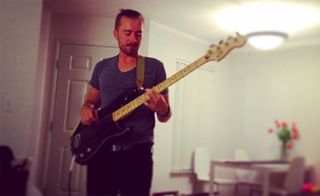
Eventually, I came back to the design field as a "usability professional". This connected my old passion for digital design with my brand new fascination with cognitive science.
I started my first pro gig as a usability professional and simultaneously begun to work on my masters in Cognitive Psychology. Everything accelerated from there. I started to work as a UX designer designing and testing products used by millions of people. Within a couple of years, I'd become a UX manager at a successful Polish ecommerce company, Nokaut.
Nokaut IPOed in 2012, so I decided to focus on building UXPin to help people like me collaborate across the entire design process.
What led you to co-found UXPin?
They say all products are either vitamins or painkillers. For us, the product grew out of a shared pain between myself and other designers.
When I started my career in the IT field, the most admired companies had engineering-driven cultures. As designers, that was a huge pain in our side.

While this created a much-needed focus on the technology of digital products, it also sidelined design. Design was treated as an add-on to technology, not the main driver of a product's success.
This perception of design as decoration was really frustrating.
How can you treat the design as decoration, if in the eyes of customers, the design is the product? I couldn't understand it, nor accept it. After months of fighting for the good name of design (together with colleagues and later cofounders Wiktor Mazur and Kamil Zieba), we decided to solve the problem by explaining design to non-designers.
How did the company begin?
First, came the idea of collaborative design workshops. Then the tool for the workshops: a UXPin paper prototyping notepad which, to our surprise, sold out within 48 hours of being released.
About a year after the UXPin notepads launched, our customers encouraged us to take the next step to create a digital design collaboration platform.
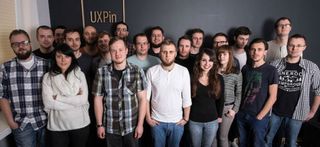
Fast forward three years, and today tens of thousands of companies use UXPin to speed up the entire design process. We'll have 80 employees by the end of the year and will continue to work on the product to make design collaboration a breeze.
UXPin was created as the solution for the pain that we, as designers, felt in our own skin and that continues to give us energy to change what might feel like an uphill battle.
03. What does UXPin offer that other tools don't?
I like to describe the vision of UXPin in three ways:
- Flawless creation (from low fidelity wireframes to fully interactive hi-fi prototypes)
- Entire design process (from early ideation to usability testing)
- Full collaboration (co-creation as well as review system)
A combination of these three aspects is unique to our design platform. Design is a problem-solving team sport. You need a collaborative approach that doesn't compromise on speed or quality.
That's precisely why UXPin provides design tools and a collaborative layer to every part of the process. From early stage sketches and wireframes, through mid- and hi-fidelity prototypes to usability testing, the entire design process can live in our tool. And even if you want to use another tool like Photoshop or Sketch, our integrations add an interactive layer to existing workflows.
04. What other tools should people use alongside UXPin?
I like to think about design as a combination of art and science.
On the art end, some graphic design tools are very useful, such as Sketch, Affinity, Photoshop and Illustrator. That is until we reach the full potential of UXPin, which is still a work in progress. Currently, our team uses Photoshop and Sketch in addition to UXPin.
The science part requires quantitative and qualitative research supported by tools like Kissmetrics, MixPanel, Intercom, Optimizely or Silverback. We use Google Analytics for aggregate data on user behavior, Kissmetrics to drill down to specific events and actions, Silverback and UXPin for usability tests, and then Intercom to communicate properly with users.
And of course, who can forget pen and paper? They remain the key tools for first step in the design process when you're engaged in more divergent thinking. We don't aim at replacing those.
05. What does the future hold for UXPin?
The future definitely looks bright. We've just closed our Series A led by True Ventures.
Personally, I'm not a huge fan of fetishizing fundraising. A chef doesn't celebrate buying groceries. But the funding definitely gives us a great chance to focus entirely on our vision of the perfect design platform, and then delivering this platform to hands of all the digital product teams around the world.
Besides, it's a great privilege to work with design legends like Jeff Veen (founder of Adaptive Path, Measure Map, Typekit, former VP of Design at Adobe) who just joined our board. We're all excited to work with one of the top designer entrepreneurs around today, and will definitely cook up some cool ideas in the next few months.
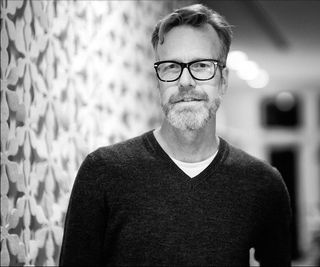
The next 24 months are all about finishing our work on the best collaborative design platform for the entire design process, then delivering that to product teams in small, medium and large companies.
You do a lot of work to educate the community: why?
Even back when UXPin was a tiny company, we took the time to create valuable content.
I published my first free ebook, UX Design for Startups, in partnership with net magazine, when we had a small team and even smaller content budget. Why? Because we always believed that any marketing must deliver value to customers first. It may be a designer's naive approach to marketing, but the ROI has been outstanding.
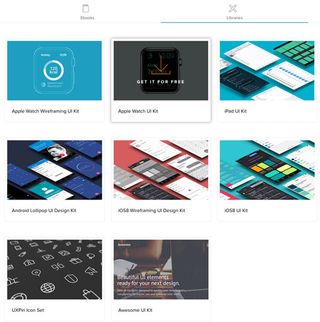
We sincerely hope that our free ebooks and UI kits and articles help people become better at design, which also increases the market size and builds up our brand in an honest and unobtrusive way.
We want to take design out of this 'black box' and show all the skills, principles, and methods behind solving product problems.
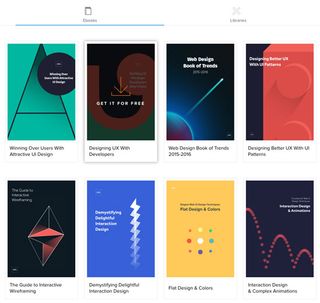
We now have the largest free design library on the web, and we will keep growing that. We release one new free ebook a week, and we don't plan on slowing down.
I really believe in karma, and so far it's been great to help others and have them help us back. It's always an honor to see someone tweet to us that they found a certain article or book helpful.
What are the biggest myths of UX design?
Throughout my career, I had the opportunity to coach multiple beginners in our field. I'm trying to take at least one intern per year and, in the past, I taught at a university. The most popular misconception of UX design that beginners have is that it's pure craft.
Beginners and plenty of 'grown-up' professionals unfortunately focus too much on deliverables and not nearly enough on the problem they're supposed to solve. That leads to over-designed deliverables that under-communicate the value.
The key to solve this issue is a proper design process that leads through several iterations of low-fidelity ideations before any mid- or high-fidelity work. That's what we're trying to support with UXPin (and we actually provided tips in The Guide to UX Design Process & Documentation).
Another problem is the egocentrism of designers and the lack of collaboration in the process. I've seen it way too many times. Product development by its very nature must be collaborative. We need people with different perspectives and skills, to build the product. Yet the tools that we've commonly used in the process are exclusive and become an obstacle for non-designers to get involved.
Can we really expect developers to work, arm in arm, with us in Photoshop? Definitely not. These tools are great for the lone designer but are way too confusing to use as the means of collaboration. That's what we're striving to provide.
Why 'UX designer'? Shouldn't all web designers design good UX?
I'm not sure 'web designer' actually exists any more as the job title. I see it less and less every year.
As the web matured as an industry, digital design became more specialized and compartmentalized. Today designers focus on different pieces of the process (eg interaction design, UX researcher etc.) and they're all definitely needed, considering the amount of work it takes to build a fully advanced work.
UX designer as a job title definitely works in small companies, where one person has to focus on both research and interaction design. In bigger companies, it makes more sense to call people 'product designer' and 'UX/product researcher'.
All of these are just labels though. The result of the work is what really matters.
What lessons have you learned from launching a startup?
The life of an entrepreneur is challenging and unpredictable. Be prepared for the lowest of lows and the highest of highs.
If you want to start a company, spend time talking to people who did it before you. Think about the rules of 'the game' and re-think your decision. If you can accept the experience in its entirety, by all means, start your own company.

Just remember, it's not about the great ideas (which we all have). It's not even about the money (designers can make more working in-house). It's about the problem you want to solve.
Spend as much time as possible validating that your problem is worthwhile. Because if your problem isn't compelling enough, it doesn't matter how elegant your solution looks.
If you can find the passion that will drive you through long hours in the next decade (or more), that's a good indicator of future success. Otherwise it will be very hard to survive the emotional rollercoaster of running a company.
Start a free trial for UXPin here.
Liked this? Read these!

Thank you for reading 5 articles this month* Join now for unlimited access
Enjoy your first month for just £1 / $1 / €1
*Read 5 free articles per month without a subscription

Join now for unlimited access
Try first month for just £1 / $1 / €1
Get the Creative Bloq Newsletter
Daily design news, reviews, how-tos and more, as picked by the editors.
Tom May is an award-winning journalist and editor specialising in design, photography and technology. Author of the Amazon #1 bestseller Great TED Talks: Creativity, published by Pavilion Books, Tom was previously editor of Professional Photography magazine, associate editor at Creative Bloq, and deputy editor at net magazine. Today, he is a regular contributor to Creative Bloq and its sister sites Digital Camera World, T3.com and Tech Radar. He also writes for Creative Boom and works on content marketing projects.
